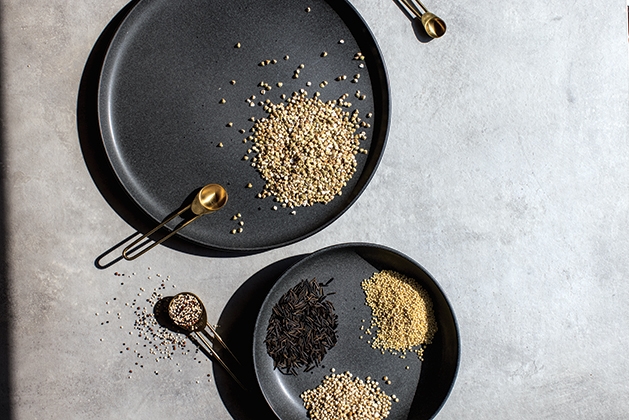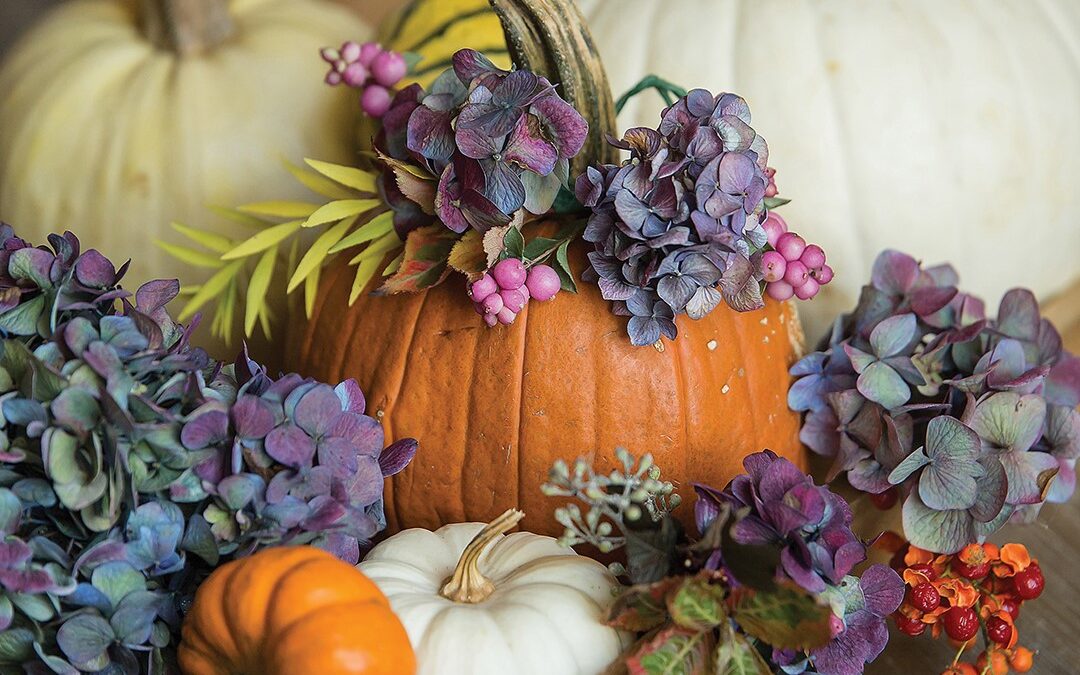
Add a touch of history and new flavor profiles to your menu.
Why does pasta get so much of the culinary glory? Granted, it transforms dishes, comes in shapes galore and has “comfort food” written all over it. As we’re in the midst of hygge cooking season, let’s take a closer look at grains—including some emerging trend-makers and recipes to keep you ahead of the grain game.
Who better than Caroline Sluyter, the Oldways Whole Grains Council program director, to clear up some grainy questions?
*Reader tip: Stick with the article until the end. We’ve got a kernel of info that might just put everything you know about a certain homegrown grain right on its head!
What constitutes a whole grain?
A grain that is whole contains all three edible components (bran, germ and endosperm) in their original proportions.
What are refined grains? Grains that are missing some portion of their original kernel are considered refined grains. Typically, when grains are refined, some or all of their bran and germ are removed. Since most of a grain’s nutrients and flavor are found in the bran and germ, refined grains are both less nutritious and less flavorful than whole grains.
Is there such a thing as “faux grains,” meaning not from the Gramineae family? Quinoa, amaranth and buckwheat are pseudocereals. While they are not in the Poaceae (or Gramineae) botanical family, they are generally considered grains alongside true cereal grains because their nutritional profile, preparation and use are so similar.
Is there an emerging grain trend we should know about? … There are five clear frontrunners when it comes to growing popularity. Perhaps the most illustrious of all is quinoa … [It] is now included in more than 10 percent of all [Whole Grain] Stamped products. Sorghum has also made impressive gains with its prevalence increasing more than threefold in 10 years. The other top contenders are millet, amaranth and teff.
What are the top five grains that offer the most nutritional benefits? There is no “healthiest” grain, just as there is no healthiest vegetable. You’ll never hear a doctor tell you to stick to carrots and spinach, even though they both have great nutritional attributes. Just as variety is key when eating fruits and vegetables, the best way to take advantage of the health benefits of whole grains is to eat a wide variety. Every grain has a little something different to offer.
Which grains serve as protein and fiber powerhouses? ... Most whole grains qualify as a good source of protein (providing at least 10 percent of the Daily Value for protein per serving). The pseudo-cereals (quinoa, buckwheat and amaranth) are all “complete” protein sources, which means they contain significant amounts of all nine essential amino acids.
Whole grains are somewhat famous for their fiber content. Again, you’ll find that almost every grain variety qualifies as either a good source of fiber (providing at least 10 percent of the Daily Value for fiber per serving) or excellent source of fiber (providing at least 20 percent of the Daily Value for fiber per serving).
How can we incorporate more grains into our diets? Making easy swaps, by substituting in whole grain versions of foods you already eat, is certainly one of the easiest ways to increase your whole grain intake without having to think too hard about it … Many consumers new to whole grains are quite pleasantly surprised at the wonderful depth of flavor …
Four to Know
Information is provided by the Oldways Whole Grains Council. Recipes can be found at wholegrainscouncil.org.
Amaranth: Technically a pseudo-grain, it’s a staple of the Aztecs, with a long history in Mexican and Peruvian cuisine (later becoming popular in Nepal, India and other countries). It’s typically served as breakfast porridge throughout Latin America and Southeast Asia. In Mexico, it’s also served popped with honey as a sweet snack called allegria.
Flavor Profile: Peppery with a sweet, grassy aroma and pairs well with squash, corn, sesame, cinnamon, vanilla and chocolate. Gluten-free
Millet: This is one of the leading staple grains of India and was also used in ancient Chinese noodles before wheat was domesticated. Nutritious millet is also important to the cuisines of South America, Russia, the Himalayas and Africa.
Flavor Profile: Buttery and pairs well with mushrooms, herbs, warm spices, scallions and squash. Gluten-free
Sorghum: Also called milo, it is believed to have originated in Africa, where it remains an important cereal grain. It is naturally drought tolerant, making it a good choice when keeping in mind ones environmental footprint.
Flavor Profile: Sweet with hints of corn or wheat flavor and pairs well with Southern ingredients (bananas, berries, bourbon, dates, figs, ham, peanuts, pecans and warm spices). Gluten-free
Teff: This tiny (less than 1mm) grain is native to the Horn of Africa, where nomads could carry enough teff seed in their pockets to sow an entire field. Its name may come from the Amharic word for “lost” because the seed is so tiny.
Flavor Profile: Slightly sweet taste with undertones of cocoa and hazelnut and pairs well with chocolate, dark fruit, nuts, pumpkin and seeds. Gluten-free
*Wild Rice: You’ve had in hotdishes and as a pilaf, but have you ever in your wildest rice dreams ever considered—popping it? Heat it in a little oil, shake it until it pops. Salt to taste. (thespruceeats.com)






















